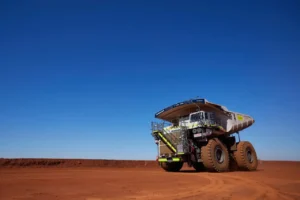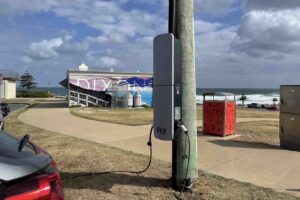Morgan Stanley, the investment bank that predicts one million Australian households will adopt battery storage over the next four years, says the broader energy market in Australia still underestimates what’s about to hit them.
The comments come in a brief appraisal of the main factors weighing on the Australian energy market and the incumbent coal-fired generators, the big networks and retailers.
 Many of these companies have sought to downplay the prospect of battery storage in recent weeks and months, telling investors and conference gatherings that battery storage is still “un-economic” and that installation rates will be slower than thought.
Many of these companies have sought to downplay the prospect of battery storage in recent weeks and months, telling investors and conference gatherings that battery storage is still “un-economic” and that installation rates will be slower than thought.
The flip side of that argument is that Australian households already have a powerful incentive to install battery storage – given high electricity costs, abundant sunshine and high rates of rooftop solar installation, and it is likely that many households don’t much care whether battery storage systems pay back their investment in 5 years, 10 years or 15 years. They simply want the product.
“We think the market continues to underestimate the potential for household battery uptake and the resultant reduction in demand for grid electricity,” the Morgan Stanley analysts said in a report last week.
Certainly, that is the view of many major battery storage developers. Tesla has chosen Australia as its primary market, and has already launched its produce. Enphase has chosen to release its battery storage product in Australia in late June/early July. LG Chem today announced plans to fast-track development in storage in Australia, a market it says will grow five-fold this year alone. Australia’s Redflow will launch its battery storage product next week.
Morgan Stanley says battery storage will play a vital role in what it calls the “New Economic Infrastructure”, and will be one of five key structural themes for an analysis on the Australian economy in Transition, in what it describes as the “renewable energy revolution.”
“Australia has a world-leading solar resource, and one of the highest per capita solar installation rates in the developed world,” the Morgan Stanley analysts says in the report. “Pairing Australian rooftop solar with household battery storage could further disrupt the traditional grid electricity supply model.”
It notes that Australia already has more than 1.4 million homes (15 per cent of the total) with rooftop solar and will extend this “leadership” by adopting new battery technology and pioneering distributed generation technologies.
It says regulation will need to move quickly and collaboratively to establish the right incentives, but may be over-run by the pace of change.
“The preconditions are in place with a highly urbanised, high-income society facing some of the highest electricity costs in the world,” it says.
“To date, the accelerated take-up of household solar has been a result of generous feed-in tariffs. Proposed reforms to electricity tariff structures will need to shift incentives towards more efficient system utilisation, and while economics for new adopters may be impacted in the short term, we expect the trend of sharply-falling solar PV costs will ensure industry growth.
“Cost-effective battery storage will be the game-changer, perhaps even independent of regulatory reform.”
Morgan Stanley is standing by its forecast from last May that 40 per cent of households may take-up battery storage by 2035. Indeed, it now believes that the take up rate – originally put at 2.4 million households by 2035, could exceed 3 million by the same date, although it says tariff and incentive reform will be key.
This accords with the broader view in the industry. Battery storage developers – such as Enphase – predict that storage costs will fall by half by 2020. Tesla suggests they may fall further.
But regulators have been batting the ball down the road, refusing in some cases to even consider battery storage as a network or system pricing issue due to a “lack of information”. Many believe regulators will be run over in the rush, along with incumbent generators and networks that are not quick enough to react.
Morgan Stanley says there are clear benefits for the overall electricity system from battery storage, but they are a threat for generators.
“Once at critical mass, distributed battery storage can reduce peak grid demand, which means less network investment will be required, lowering long-run (transmission and distribution) costs through greater system efficiency.
“The impact on the major listed generators is less clear, with demand for stationary generation likely to fall, potentially leaving assets stranded and lowering pool prices. Potential offsets include new product marketing or inter-household electricity brokerage revenues.”
That points to the fact that the battery storage revolution is not just about hardware, but business models enabled by smart software that will allow trading with the market, and trading with other households.
In effect, creating an “internet” of millions of independent producers and consumers, and snatching the power, quite literally and figuratively, away from the old model of centralised generation and vast networks.








